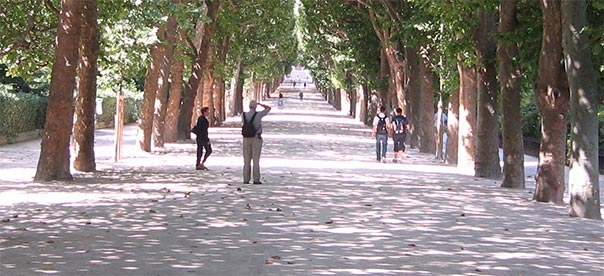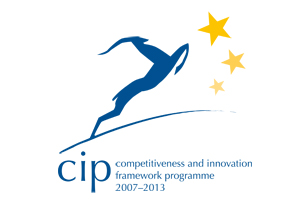 Affect theory and Attractivity of destinations
Affect theory and Attractivity of destinations
This article seeks to examine how affect theory might offer a complementary explanation and thus deepen understanding of the ability of destinations to continue to attract tourists (or not). The study is based on over twenty years of qualitative analysis and observation of Monaco and Tahiti and its Islands. These are well-recognized tourism destinations but they display very different levels of attractivity.

Introduction
It is only after you have come to know the surface of things ... that you can venture to seek what is underneath. But the surface of things is inexhaustible. [Italo Calvino, Mr. Palomar]
Work on affect encompasses insights of many disciplines such as geography, gender studies, sociology and anthropology, to take knowledge beyond its present visual textual and linguistic bounds. The recent turn to affect and emotion theory has placed affect at the heart of the analysis of social rapports, including in tourism destinations. It is recognized that corporeal reactions have to be considered together with other elements like culture or economics when examining social behavior such as how tourists decide whether they will return to a destination. The effort here is not so much to build a case for a turn to affect as the explanation but rather to illuminate how it may help formulate a more complete understanding of the elements that influence the kinds of experiences that are created in destinations and thus determine the destinations’ attractiveness in a positive or a negative way. This approach offers a different supplementary way of understanding the fortunes of tourist destinations. In this article, tourism is defined as encounters which generally involve engagement, relations, and/or negotiations. Encounters are often brief because tourism is defined as restless movement, passage, and flows but they always involve the use of more senses (as well as the emotions such engagement provokes) than just gazing by what seem like automata. Encounters require embodied subjects, in opposition to bodiless anonymity, for long the main characteristic of ‘tourists’ (Johnston, 2001; Jokinen & Veijola, 1997; Veijola & Valtonen, 2007). This notion of embodied (or corporeal and emotional) performative engagement produces more nuanced understandings of tourists’ experiences and allows one to look at the role of all participants in the co-creation of behaviors and practices in ‘tourist zones’: encounters are not given, but produced by the experience of the agents involved (Bondi & Davidson, 2003; Haraway, 2003). Local residents, tourism entrepreneurs and service workers, together with tourists are responsible for affect vibes generated in tourism spaces.
Two contrasted and contrasting destinations will illustrate this work: their size, their geography, their political regime, and the people who live in each but also their touristic fortunes are divergent. Monaco, a minuscule urban area, is an island of prosperity along the Mediterranean coast; the other one is Tahiti and its islands (the tourism brand name of French Polynesia), a group of 118 islands in the Eastern Pacific, covering an area equal to the whole of Europe. Both are well known at diverse scales, locally, regionally, nationally and internationally, yet have very different numbers of visitors. One continues to successfully attract them (5 million per year to Monaco), the other struggles tremendously even though other Pacific island destinations have seen numbers of international arrivals increase over the same years (220,000 visitors to Tahiti at the peak in 2005, steadily down to under 160,000
in 2011; Institut, 2012). Tahiti does not seek to become a mass tourism destination but it did want to attract about 300,000 tourists by 2015 (Mission d’Evaluation et de Prospective, 2000).
The methodology used in my research is both qualitative and reflexive. A qualitative methodology enables one to uncover subjective meanings that complete our understanding of the social world, which is defined out of personal and cultural experiences, not just through statistics (Bryman, 2012; Jennings, 2011; Walliman, 2011). I do not presume to speak for the residents of Tahiti and Monaco but I bear witness on issues that concern them. Qualitative methodology requires reflexivity about, amongst other factors, one’s positionality, to ensure that one presents research results in the most unbiased way possible. Bias exists in all forms of research, so quantitative methods do not necessarily provide more robust and rigorous results. Qualitative methodology dictates clear ways that ensure the rigor and robustness of data collection and analysis.
The data used are the fruit of yearly visits of 2–6 weeks (with some lasting several months) over the past few decades to both destinations which enable(d) me to keep informed of happenings in Tahiti and Monaco. During these sojourns I collected interviews of residents, tourists and of political as well as tourism officials and I observed practices on numerous occasions by local authorities, by tourism agents, by tourists and by residents to capture the atmosphere in bo analyze the validity of tourism as a tool of economic development.
It was only after many intersubjective encounters with different stakeholders and after reading publications, some of which are cited in sections ‘‘Defining affect Theory” and ‘‘Affect in tourism”, below, that I discerned that affect could be one of the threads in the process of developing (or not) the attractivity of a destination.
























































